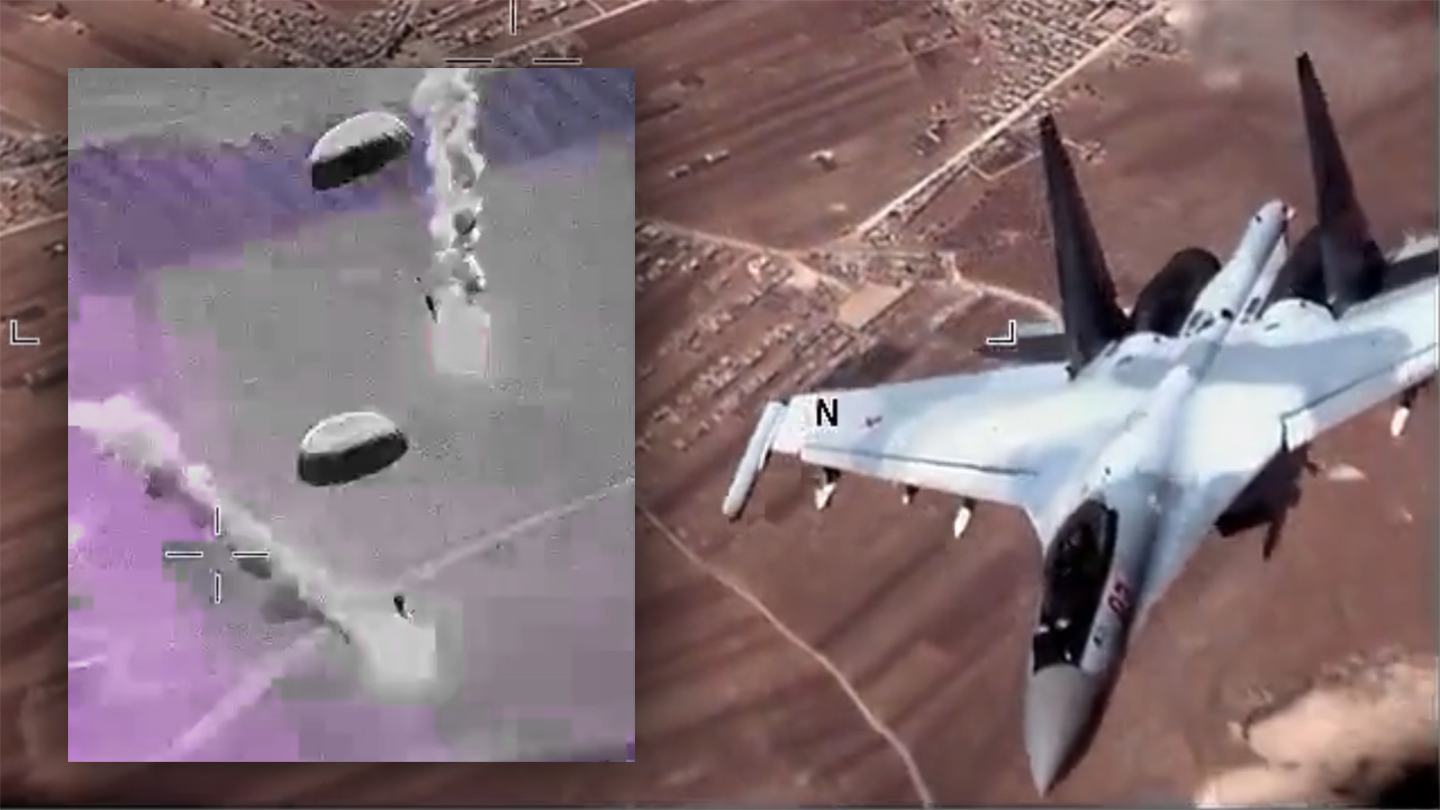Tensions between U.S. and Russian forces in the skies over Syria appear to have been further ratcheted up, with a hostile encounter between a Su-35S Flanker-E fighter and a U.S. Air Force MQ-9 Reaper drone.
In the latest such incident over Syria, the Russian jet dumped parachute flares in the path of the unmanned aerial vehicle, apparently the first time this has happened. The Pentagon has accused the Russians of “reckless behavior.” While this kind of activity is not necessarily new in the Middle East, the latest uptick led to the deployment of U.S. Air Force F-22 Raptor stealth fighters to the region last month. Meanwhile, similar incidents have also taken place over the Black Sea, one of which resulted in the loss of an MQ-9 Reaper, and elsewhere as well.
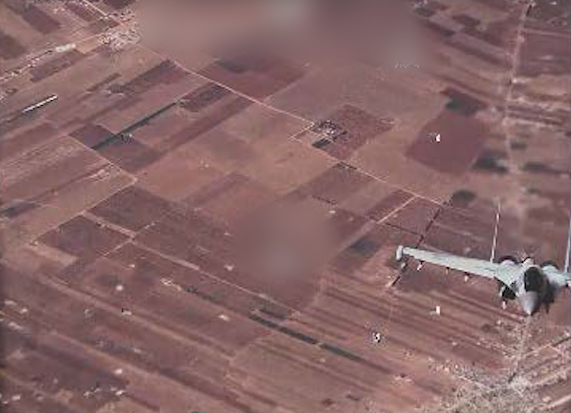
The Air Force has said that three Su-35s and three MQ-9s were involved in the incident. A video released by the Pentagon shows a series of clips, filmed from the MQ-9s, in which one or more Russian Su-35s are seen closing in on the Reapers, followed by several parachute flares drifting into the drones’ flight paths.
In a statement yesterday, July 5, Lt. Gen. Alex Grynkewich, head of U.S. Air Forces Central (AFCENT), provided the following details of the incident:
“Earlier today at approximately 10:40 A.M., Russian military aircraft engaged in unsafe and unprofessional behavior while interacting with U.S. aircraft in Syria,” Grynkewich said.
“While three U.S. MQ-9 drones were conducting a mission against ISIS [Islamic State of Iraq and Syria] targets, three Russian fighter jets began harassing the drones. Against established norms and protocols, the Russian jets dropped multiple parachute flares in front of the drones, forcing our aircraft to conduct evasive maneuvers.”
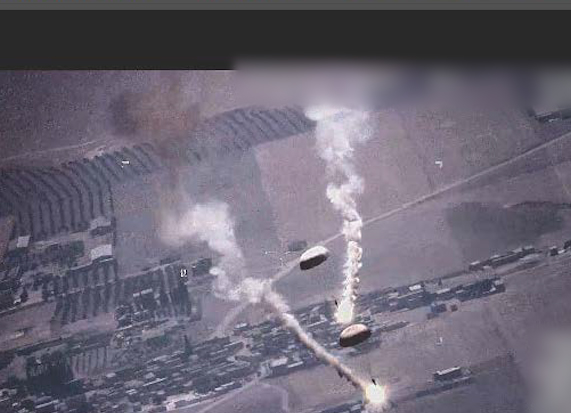
While intercepting fighters dropping flares in the paths of U.S. and allied aircraft is not unheard of, these have traditionally involved infrared decoys launched from their standard countermeasures systems.
The description of “parachute flares” and the accompanying photos indicate that a different type of store was involved.
Russian parachute flares like the M6 are typically carried for air defense training missions, being dropped from external pylons as targets for engagement by air-to-air or air-to-surface missiles. These stores, looking much like small bombs, can be fitted with infrared flares or radar reflectors, for training with either heat-seeking or radar-guided missile types.
While there is no guarantee that dropping these flares would result in contact with a drone, the use of these flares is more evidence pointing to a significant change in tactics in which U.S. drones are viewed by Russia as legitimate targets with the potential to be destroyed. At the same time, their longer burn time (compared to standard infrared decoys) and slower rate of descent make them potentially a bigger hazard for relatively unmaneuverable Reapers with low situational awareness.
The fact that these stores are now being carried by Russian fighters in Syria suggests they are intended for the specific purpose of interfering with U.S. and allied air activities. Indeed, the load-out would seem to be tailored for drone-harassment sorties.
As well as dropping parachute flares, the Air Force added that “One Russian pilot positioned their aircraft in front of an MQ-9 and engaged afterburner, thereby reducing the operator’s ability to safely operate the aircraft.”
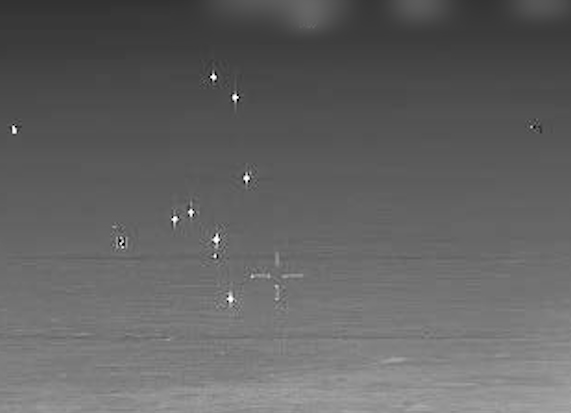
“These events represent another example of unprofessional and unsafe actions by Russian air forces operating in Syria, which threaten the safety of both U.S. and Russian forces,” Grynkewich added. “We urge Russian forces in Syria to cease this reckless behavior and adhere to the standards of behavior expected of a professional air force so we can resume our focus on the enduring defeat of ISIS.”
In a separate statement, Army Gen. Erik Kurilla, head of U.S. Central Command, claimed that Russia’s violation of ongoing efforts to clear the airspace over Syria “increases the risk of escalation or miscalculation.”

Exactly where this latest encounter took place has not been disclosed, although MQ-9 missions over Syria are regular, with these drones being used to support the fight against the militants of the so-called Islamic State that still operate in the country, as well as directly targeting higher-level terrorists.
Based on open-source geolocation, the incident appears to have taken place over the village of Sousianin (alternatively Sosyan or Susiyan) in northern Aleppo Governorate, northwestern Syria.
The standoff between Russian and U.S. airpower over Syria had previously led to an incident in which a Russian-operated Pantsir-S1 (SA-22 Greyhound) ground-based air defense system fired on an MQ-9 flying over the eastern part of the country, but failed to shoot it down. The extent of damage to the drone remains unknown.
That incident occurred in November 2022, but details only emerged in April this year, after Pentagon documents were leaked online by Airman 1st Class Jack Douglas Teixeira of the Massachusetts Air National Guard.
The War Zone was the first to get on-the-record confirmation of this incident, which you can read more about here.
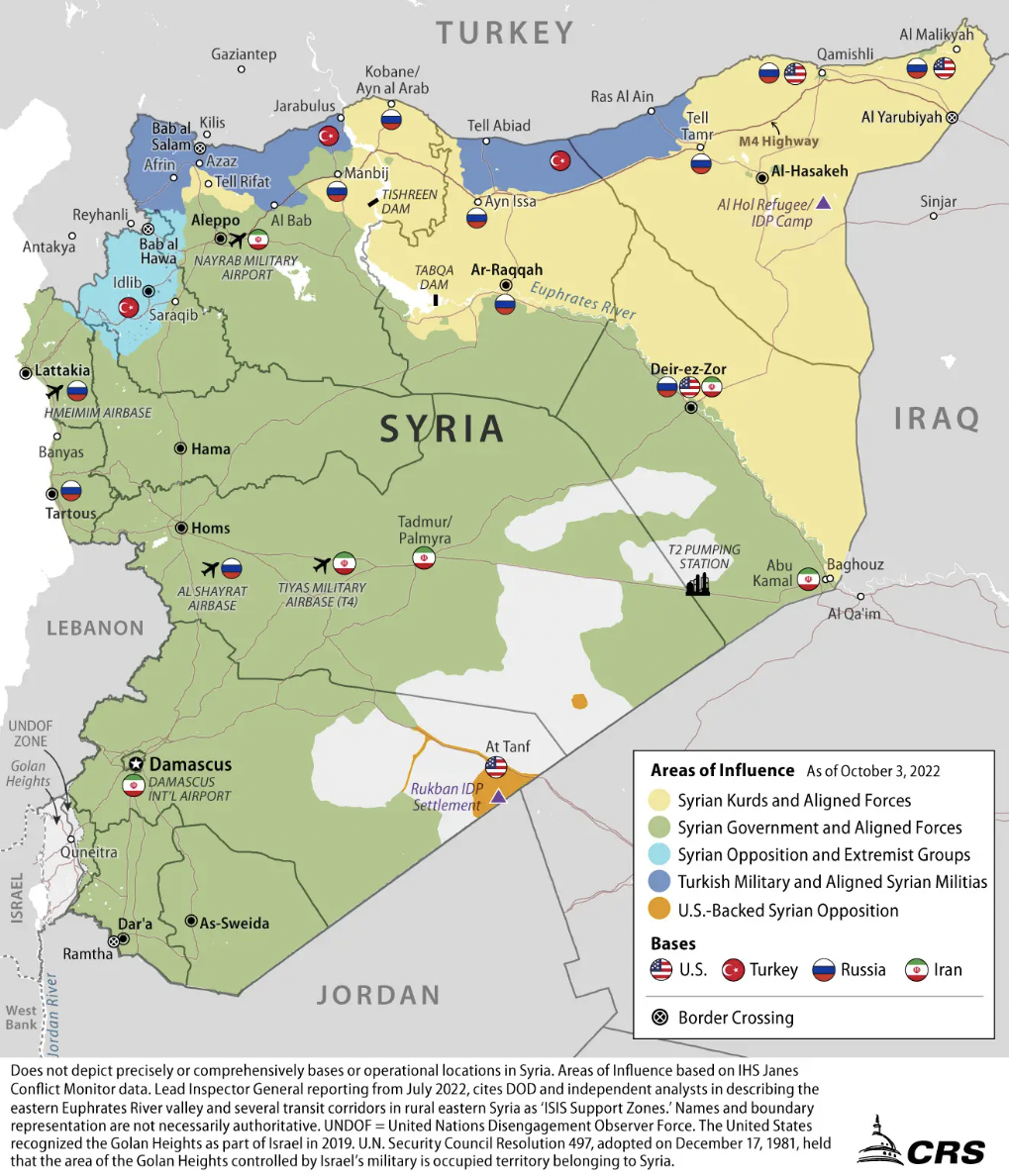
Generally speaking, U.S.-backed predominantly Kurdish forces control much of northeastern Syria, although Russia maintains several outposts in that part of the country. Overall, the security situation in the region is complex and made more so by the simultaneous presence of Turkish military units and Turkish-backed groups in the same area.
The revelation of the Pantsir-S1 incident came as senior U.S. commanders had increasingly been discussing what they described as an uptick in aggressive Russian behavior in Syria and elsewhere in the world.
In April, AFCENT released two declassified videos that it says show other examples of risky encounters with Russian aircraft over Syria. In both cases, the clips also show heavily armed Russian Su-35s, filmed by U.S. combat jets in the region.

That same month, AFCENT stated that “armed Russian fighter aircraft” had directly flown over U.S.-led coalition forces in Syria at least 26 times between March 1 to April 19. The command also said that there had been 63 violations since March of deconfliction protocols between U.S. and Russian forces.
While formal deconfliction arrangements between the U.S. and Russian militaries in Syria were introduced in 2019, the Kremlin’s forces have been repeatedly accused of violating their terms.
Part of the U.S. military response to these incidents has been the deployment to the Middle East of F-22s from the 94th Fighter Squadron, headquartered at Joint Base Langley–Eustis in Virginia. These jets can provide escort missions for drones if required. You can read more about that development in our report here.
The presence of F-22s in the region does also raise questions about the response to the latest MQ-9 incident. The Raptors were expressly deployed in response to these kinds of scenarios and there is, so far, no mention of them or any other aircraft even heading to the area after the Su-35s appeared. Looking for additional information on this, we have reached out to U.S. Central Command (CENTCOM), which then directed us to AFCENT, who we have we have also contacted for more.
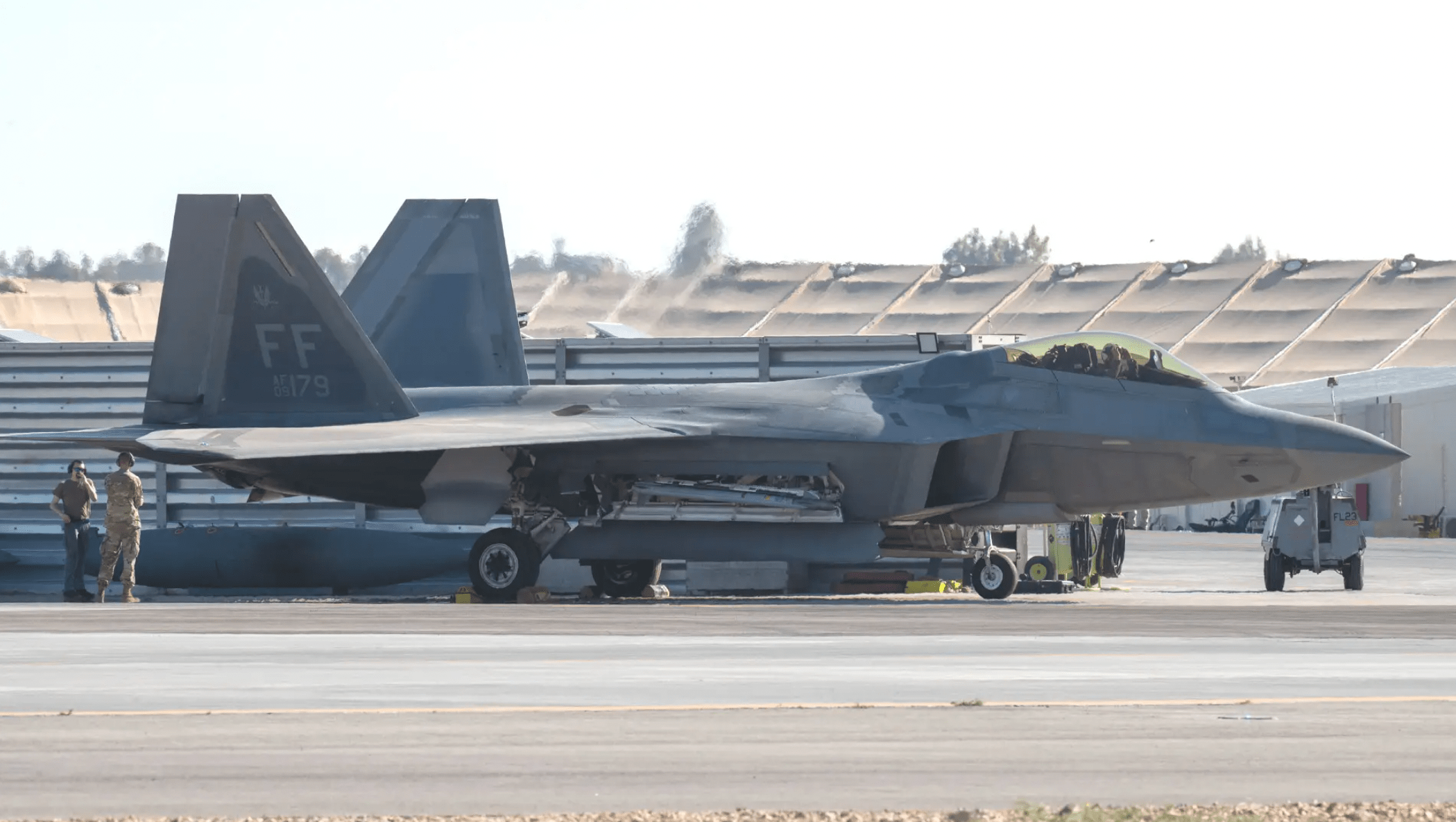
Around the same time the F-22s were arriving at an airbase in Jordan, Lt. Gen. Grynkewich, speaking during Defense One’s Tech Summit, observed that the increasingly close relations between Russia and Iran had also contributed to a changing dynamic over Syria.
“That dynamic, I think, has resulted in collusion, if you will, between the Russians and the Iranians, both of whom want to see us out of Syria,” Grynkewich said. “They’re [also] colluding with the Syrian regime and trying to push us out of Syria as quick as they can.”
Not just Syria, but also the strategic Black Sea region has seen tense encounters between Russian and U.S. military aircraft. In March this year, for example, a Russian Su-27 Flanker-B fighter collided with a U.S. MQ-9 over the Black Sea resulting in the drone crashing. The Pentagon described the intercept as “reckless” and “unprofessional” and it also included the Flanker making multiple passes very close to the drone and dumping fuel on it, as you can read more about here.
Two Russian Su-27s conducts an “unsafe and unprofessional” intercept with a U.S. Air Force MQ-9 over the Black Sea on March 14, 2023:

Also over the Black Sea, in an incident last September, a dramatic encounter between a U.K. Royal Air Force RC-135W Rivet Joint electronic surveillance aircraft and a Russian Su-27 fighter saw the latter launch a missile. Whether deliberate or not, that missile appears to have malfunctioned, preventing what could have been a very serious international incident.
All these incidents also need to be seen in the context of deteriorating relations between the United States and Russia ever since the Kremlin launched its full-scale invasion of Ukraine in 2022. As Russia’s relations with the United States and many other Western countries have taken a turn for the worse, it’s not a surprise that spillover effects are being felt elsewhere in Europe and other parts of the rest of the world, including in Syria.
Taken together, the level of harassment that U.S. drones are facing from the Russian military is concerning. After all, dropping multiple parachute flares (even as opposed to infrared decoys) presents a very real risk of taking down a drone flying in close proximity. Moscow surely sees the damage or destruction of a drone as a lower-risk outcome, bearing in mind there is no danger of killing foreign military personnel. Supporting the idea of the lower stakes involved is the fact that previous incidents involving the loss of U.S. drones, both over the Black Sea and over the Gulf of Oman did not lead to any kind of direct retaliation.
At the same time, the potential for escalation remains, and increasingly belligerent actions by Russian pilots and air defense personnel, whatever their nature, bring risks of their own, even if through a simple error or misunderstanding.
Update:
The French have just said their Rafales also had a unsafe encounter with Russian Su-35s along the border with Iraq. The tweet states:
“On 06/07, 2 Rafales on a protection mission on the Iraqi-Syrian border reacted to a non-professional interaction on the part of an SU-35. The pilots maneuvered in order to control the risk of accident before continuing their patrol.”
Contact the author: thomas@thedrive.com
